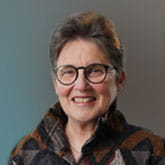Anywhere you turn nowadays you will see the mention of health care "Big Data" and health care "Big Data analytics." If your natural assumption is that the "bigness" of health care data has to do with its sheer volume, you would be correct. A report by the IDC from 2014 showed that the volume of healthcare data in 2013 was 153 exabytes (one exabyte equals a billion gigabytes), a number that is projected to reach a staggering 2,314 exabytes by 2020. With an annual growth rate of 48%, health care data is also growing at a rate that exceeds any other industry's data. But the volume of health care data is only part of the story. Health care data exemplifies all of the other attributes of big data known as the 5 Vs:
- There is a large Variety of data,
- the data is highly Variable,
- it is generated at high Velocity and
- invariably suffers issues with Veracity because of its inherent messiness and imperfections.
- Finally, there is great Value in the data, as unlocking its secrets could provide lifesaving remedies and have a significant economic impact.
Considering these characteristics, it is not surprising that there has been explosive development of health care analytic platforms, most which tout powerful predictive and prescriptive analytics capable of analyzing very large data sets over time, identifying causality and predictive patterns.
This is precisely where the big paradox of "little" health care data becomes apparent. In the rush to create, refine and implement big data analytics tools, the healthcare technology industry has overlooked "little data" that most practicing physicians need in order to improve the quality of care they provide while reducing costs and improving outcomes. The paradox of this overlooked data is that it shares almost all of the characteristics of big data in that it has great variety, variability, velocity, veracity issues, and value. These data sets therefore require sophisticated analytics including descriptive, predictive and prescriptive analytics, and cutting-edge visualization techniques which render the types of insights most practices require on a daily basis.
Here at NextGen Healthcare, we are committed to little data analytics of the highest order. We like to apply big data methodologies to all data – both big and small.
Meet NextGen Ambient Assist, your new AI ally that generates a structured SOAP note in seconds from listening to the natural patient/provider conversation.
Read Now